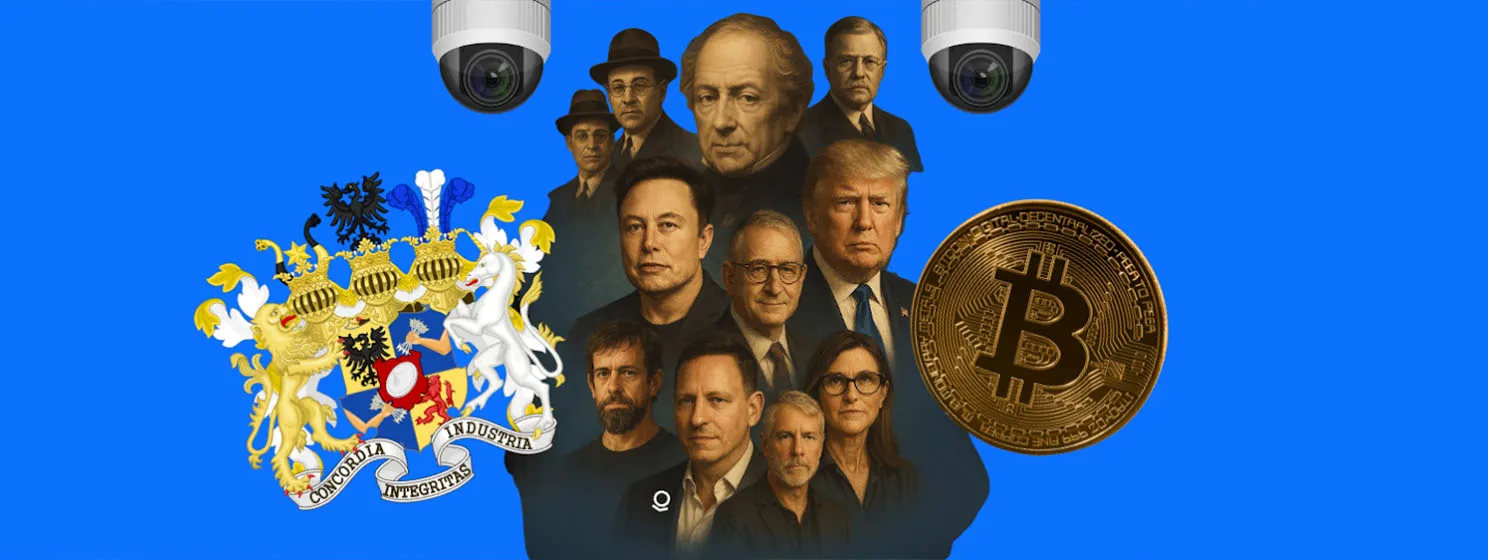|
Getting your Trinity Audio player ready...
|
This post originally appeared on ZeMing M. Gao’s website, and we republished with permission from the author. Read the full piece here.
There are already hundreds if not thousands of blockchains each with its own base coin and many tokens on it. And people keep creating and advocating new blockchains.
Many blockchains, few useful applications—that is the sad reality of the current crypto world.
People have designed many novel protocols meant to improve Proof-of-Work (PoW). But they are all degradations, not improvements, and have all happened as a result of some form of a misunderstanding about Bitcoin and PoW, directly or indirectly. It all started with BTC. People think BTC is Bitcoin and PoW but do not know that BTC is a severe distortion of the original Bitcoin protocol. BTC introduced false problems and misled others to find solutions, when those problems do not exist, and new solutions are unnecessary in reality.
In many cases, in addition to ignorance, arrogance and greed also play a role.
Some created nonscalable systems that are fine-tuned for an alluring narrative by sacrificing scalability (e.g., BTC and Ethereum)
Some created superficially scalable systems by sacrificing security and usability. One popular trick is to create a façade of “consensus validation” when no real reliable decentralized validation is being performed. Another trick is to create a façade of a “blockchain” when no reliable chain is actually being built.
At first it was the techno-geeks that created their own ideology-based blockchains that do not work as economic systems. Following suit, businesspeople became super creative and wanted their own blockchains to achieve the creative business models they just concocted.
But how do they create blockchains without even understanding the fundamentals of the blockchain? No worries, because there is even a booming industry of creating custom blockchains for businesspeople lack technological understanding.
What people do not know is that those who are building blockchains for others do not understand blockchain themselves. They’re good at creating blockchains from a pure technical or software programming point of view (and available open-source codes are making the part easier to start with). But few understand the essence of blockchain as a system that combines computer sciences (especially security, cryptography and systems design), economics, law, game theory and many other areas.
In creating all these blockchains, people are not showing the minimal due respect to the fact that the inventor of Bitcoin was a polymath, a genius in all these multiple areas of knowledge.
Limited improvements over BTC and Ethereum do not matter
Some new blockchains do show obvious improvements over BTC and Ethereum, but such improvements are not fundamental, and are really not needed. See for example, Solana.
It would not be surprising if a new blockchain solves some of the problems of BTC and Ethereum. But BTC and Ethereum are not the state-of-the-art. Bitcoin Satoshi Vision (BSV) based on the original Proof-of-Work (PoW) is. The bottom line is that, as far as the blockchain base protocol is concerned, there really is no major problem to be solved, because BSV has already solved all the problems.
BSV solves the so-called trilemma, a fallacy artificially created BTC and Ethereum. BTC itself is a fallacy. It introduced false problems and misled others to find solutions, when those problems do not exist, and new solutions are unnecessary in reality.
Solved: Unbounded scalability, extremely low transactional cost, longest proven history of security, true peer-to-peer transactions, simplified payment verification that enables instant verification for small payments, supporting high-frequency payment channels, compatibility with the next generation Internet based on IPv6, and more.
If there’s a problem with BSV, it is the misinformation out there that needs to be solved. But time will take care of this.
Opportunities in building on the united base layer blockchain
The fact that all those important issues have already been solved on the base layer does not mean that there is no work left to be done. Quite the opposite. With a stable base layer protocol, there are almost unlimited amount of work needs to be done and unlimited opportunities to be explored, in other layers including infrastructure and application layers.
Internet is an analogy. By 1995, most people had already figured out that the opportunities were no longer in creating their own version of the Internet, but in developing TCP/IP-based Internet infrastructure and applications.
Perhaps it is still not 1995 yet when it comes to blockchain. But it is not very far away.
On the other hand, there are something unique about blockchain that makes conceding to a unified protocol far more difficult than accepting an Internet standard in 1990s. The first is the fact that it is far easier and cheaper today to create a new blockchain than creating a new candidate Internet in 1990s. This is a curse not a blessing to blockchain. The second is the fact that it is far more attempting to create a new blockchain than developing a new Internet standard. Again, this is a curse not a blessing to blockchain.
A new blockchain comes with an ability to print its own money with new coins and tokens. It is an extreme incentive to create one’s own blockchain rather than to develop products on an existing chain. It has been demonstrated to be the fastest get-rich-quick scheme without having to develop a useful product.
In contrast, the Internet did not have its own money, and never had this type of a corrupt incentive structure.
Given these unique factors, it would take an extraordinary level of intelligence and integrity today to see the unified future of the blockchain and start to put the effort on building the infrastructure and applications on it instead of creating new blockchains.
But the future already has an inevitable theme despite the noises. The next generation Internet will integrate IPv6 with Bitcoin’s blockchain and CGA (cryptographically generated addresses) to create a true peer-to-peer Internet of value (IoV). And Bitcoin was designed from the very beginning with this vision. This is a fact. A fact that very few people know due to the extraordinarily successful misinformation campaigns and social engineering.
But more and more people are seeing the truth and have come to understand the blockchain base layer of IoV is already set, and there is no reason to work on another useless blockchain protocol and coin.
Beyond the base layer protocol and base coin level, however, lie enormous technological and economic opportunities. Only that money has to be made – but can be made – the old-fashioned way, that is, by actually creating new value adding to the economy.
Back to Proof-of-Work (POW)
The genius of Proof-of-Work (POW) is deeply and widely misunderstood. The fact that BTC, which is based on a severely distorted Bitcoin protocol, became the symbol (in fact a misrepresentation) of PoW, is both a result and cause of that misunderstanding.
The PoW as originally designed by Satoshi maybe essentially described as follows:
A competitive economic system that requires nodes to perform and demonstrate a useless work in order to signal and prove both their honesty and ability to perform a useful work.
Note that there are two opposite kinds of work involved in PoW: a useless work, and a useful work. The former is a signal, while the latter the purpose.
Both are necessary, but the goal of a scalable PoW system is to maximize the amount of useful work that can be performed without sacrificing the quality of the signal which indicates both the ability and honesty of the nodes who do the work.
The fallacy of BTC is that it is designed to only do the useless work but very little useful work. BTC is all about signal based on useless work, not useful work. In fact BTC has built its entire narrative based on that signal, by promoting and amplifying the signal with deep social engineering, with remarkable success.
But it is inevitable that BTC will end up finding its signal being just noise. The reality can be manipulated for a while but not forever, especially when there is a competing force actively building on and revealing the reality.
The real harm of BTC is not that BTC itself does not work, but that it has caused a prevailing misunderstanding about Bitcoin and PoW, leading to all kinds of unnecessary attempts to improve the blockchain consensuses, while all the energy and resources could have been focused on real technological developments. The consequence is a multitrillion dollar distraction.
Only PoW works. But people hate work, even a mention of the word, and never ask themselves the simple question: who is going to do all that work after all? More specifically, without a reliable signal and proof, how do we know who is going to have the honesty to do the work? And without proper economic incentives, who is going to have the willingness to do the work? And without real economic competition and the continuous technological innovation driven by competition, who is going to have the ability to do the ever-increasing amount of work to support continuous scaling?
And only UTXO-based parallelization is scalable. Account-based systems can only work as niche sub-networks, not as a global horizontally scalable system. But that’s a different story.
One blockchain as base layer
People get nervous or even antagonistic hearing about “one blockchain rules it all” because it does not sound democratic or equitable enough. But it is a principle of cybernetics that a complex system needs unity at the base purpose level in order to support a healthy variety at application levels.
The Internet is a great example. It is the unity at the Internet Protocol (IP) level (and to a large degree at TCP transport level as well) that made the system not only stable but also flexible. One Internet, unlimited applications. Not the other way around: many internets, few applications (if this sounds strange, it does not once you translate it to the sad crypto reality: many blockchains, few applications).
Even the universe is created based on the principle that the law is set with absolute stable unity, while the existence based on the law has unlimited variety. The unlimited variety is possible because of, not in spite of, the stable unity of the law.
With the upcoming integration of the Internet and blockchain on the basis of IPv6 and CGA (cryptographically generated addresses) to form a unified IoV, there can only be one blockchain at the base layer. And that blockchain must have extreme scalability and low cost, in the range of TPS in billions and cost per transaction a thousandth of a cent. Other blockchains will either die or if they have a good enough reason to continue to exist in the market, will be absorbed into the unified IoV and become overlay networks, enjoying the efficiency of the base layer blockchain, while maintaining its niche.
Watch: Dr. Craig Wright’s Keynote speech: Cloud Security, Overlays & Blockchain at the BSV Global Blockchain Convention
https://www.youtube.com/watch?v=RzSCrXf1Ywc&t=30032s

 07-18-2025
07-18-2025 





